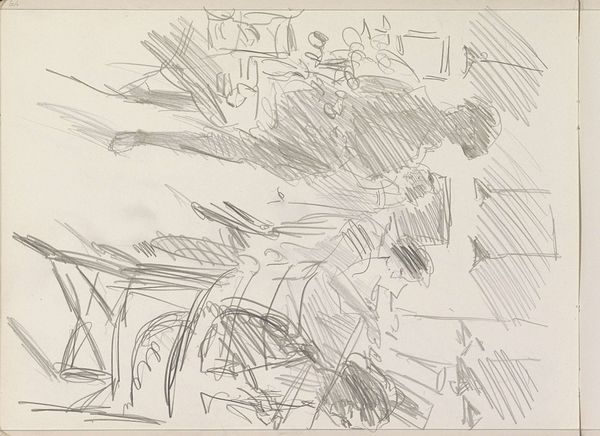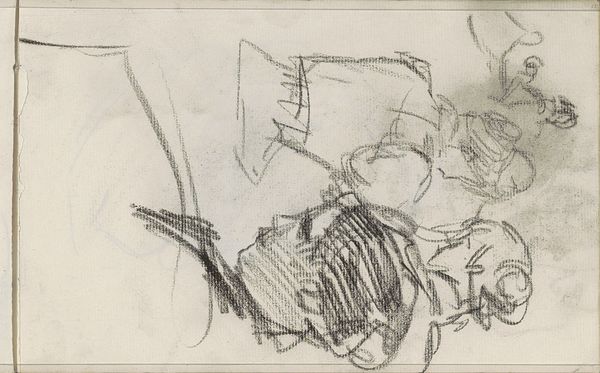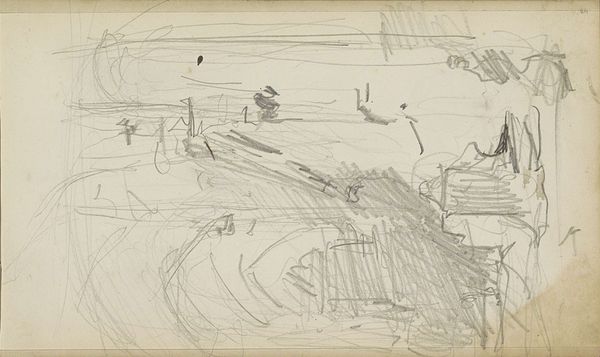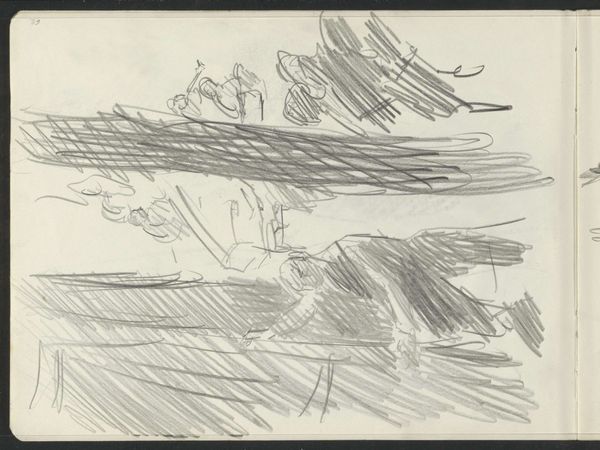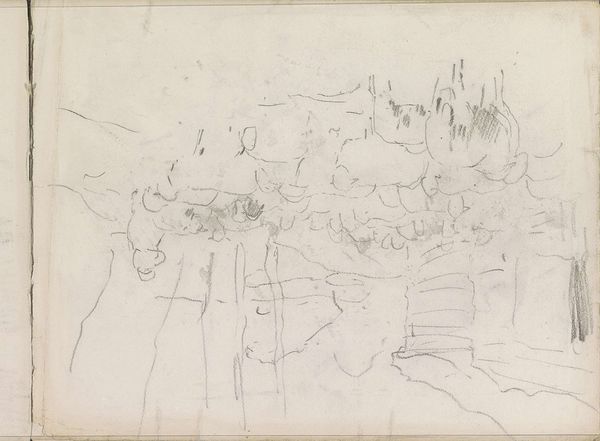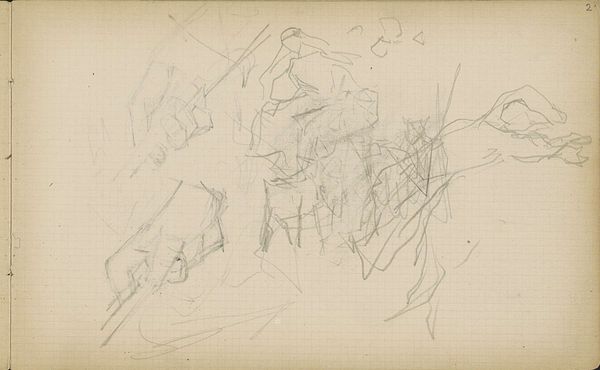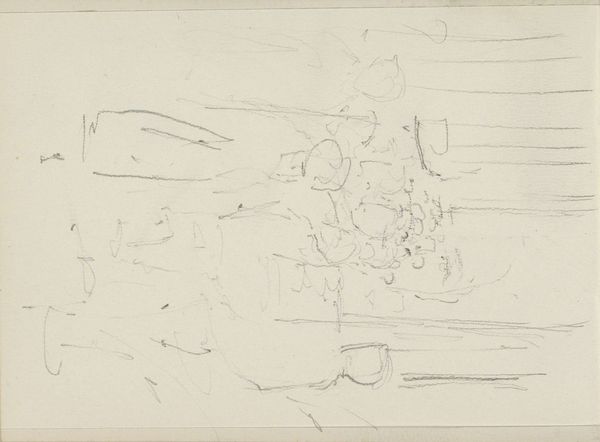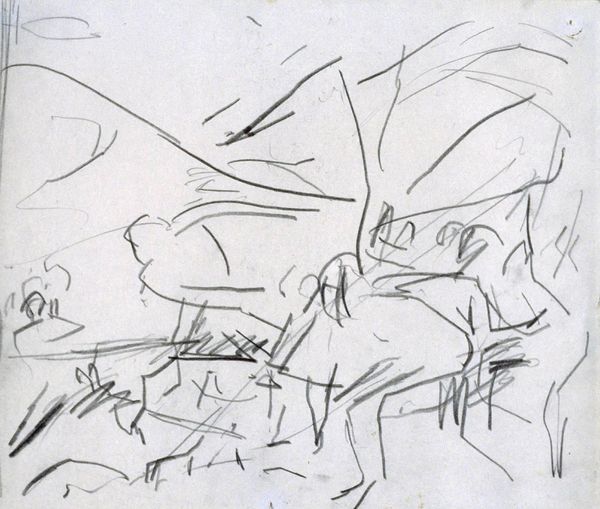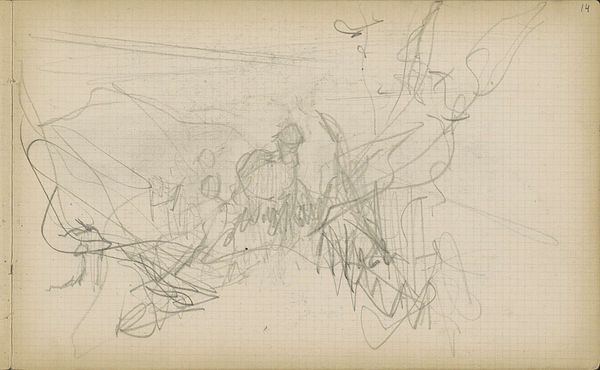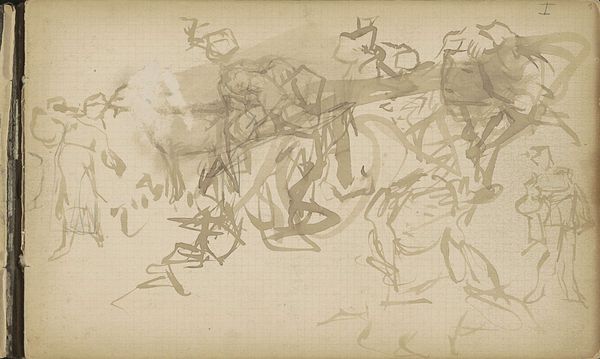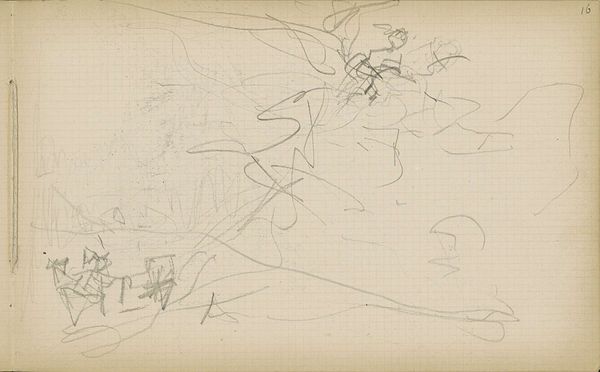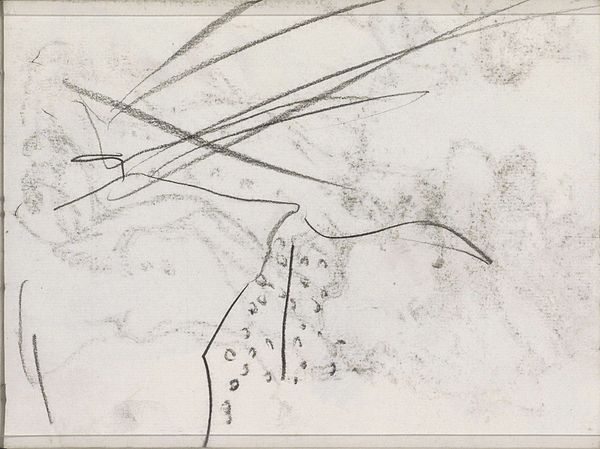
Copyright: Rijks Museum: Open Domain
Editor: Here we have Isaac Israels' "Women in a Dressing Room," a pencil drawing likely from the 1915s to 1925s. It's held at the Rijksmuseum. It’s fascinating how such loose lines convey so much movement. How do you interpret this work? Curator: This piece speaks to me about the liminal spaces women occupy, both physically and socially. The dressing room itself is transitional, a space where identities are constructed and deconstructed, often under the intense gaze of societal expectations. What do you think the unfinished quality adds? Editor: I think the sketch-like nature gives it a raw, unfiltered quality, almost like we're seeing a private moment not meant for public consumption. Curator: Exactly. Israels, though a man, captures a certain intimacy here. We must also consider the historical context – the changing roles of women in the early 20th century. Are they performers, bourgeois women, or something else? How might their class intersect with the act of preparing and presenting themselves? Editor: That's an interesting point. I hadn't considered the economic aspect. It makes you wonder what pressures they were under to conform to certain beauty standards. Curator: And what were the consequences of either adhering to or resisting those standards? Who gets to define "beauty" and for whose benefit? This drawing invites us to consider these questions, doesn't it? Editor: It really does. I never would have thought of it in that way. I was too focused on the Impressionistic style, and now I see that there is much more. Curator: Precisely. Art historical context transforms the visual into the meaningful. We learn from looking at the composition, the cultural codes, the power dynamics, and hopefully gain deeper insight into the drawing, into ourselves and our society.
Comments
No comments
Be the first to comment and join the conversation on the ultimate creative platform.
